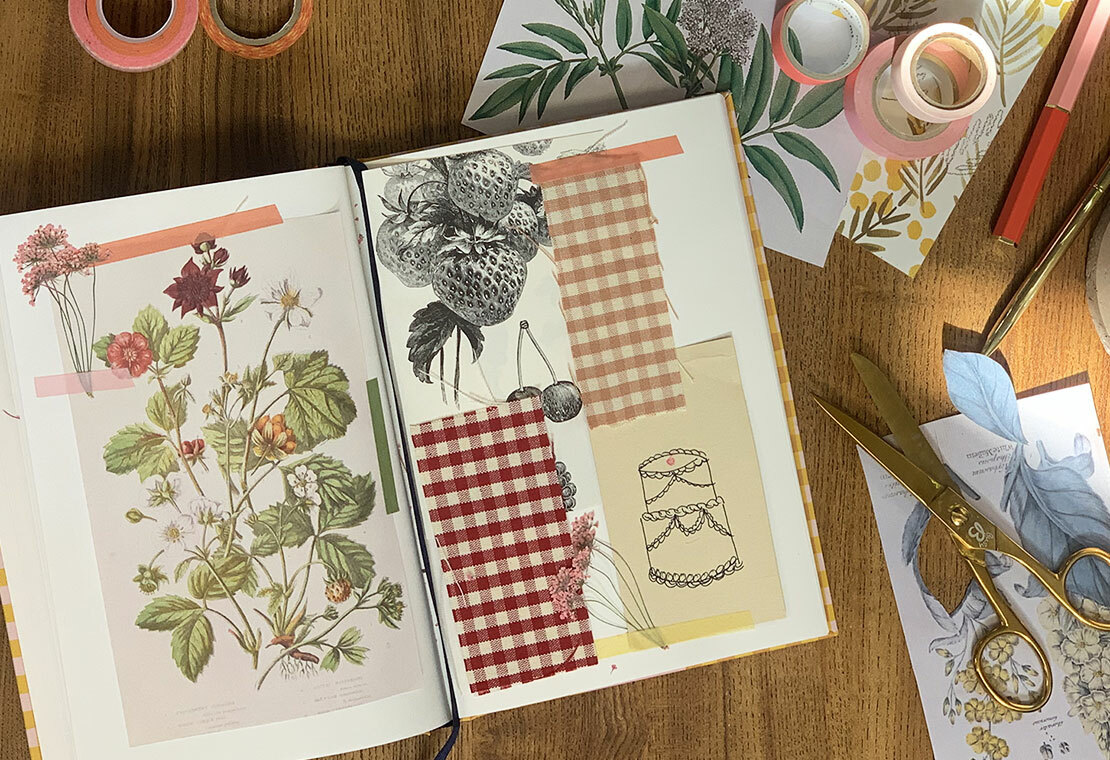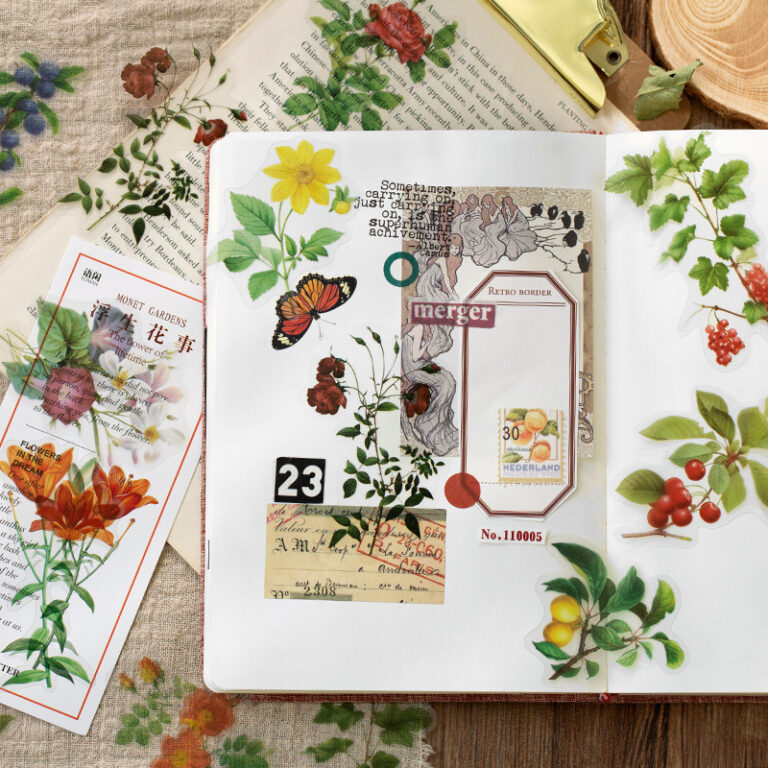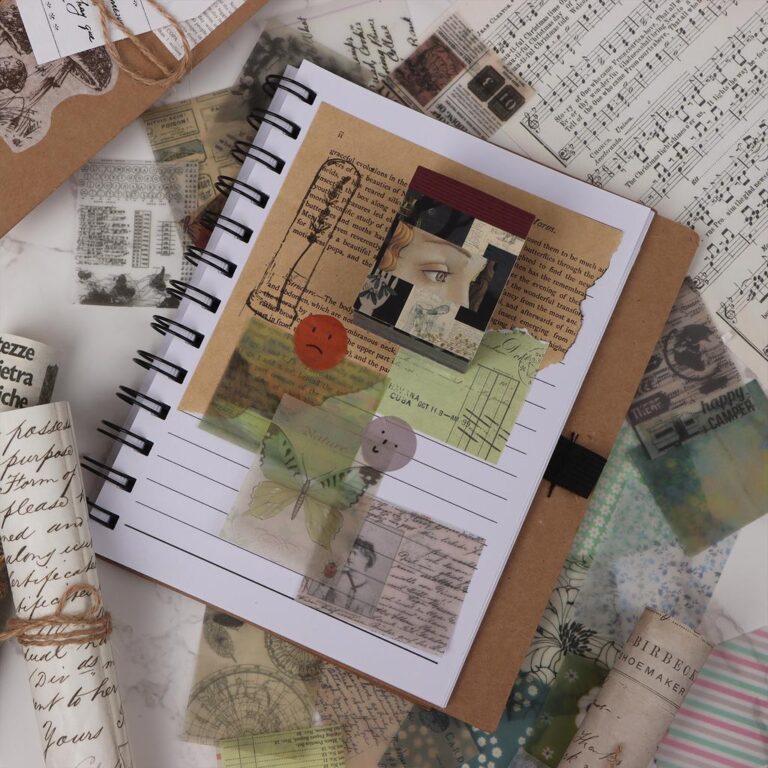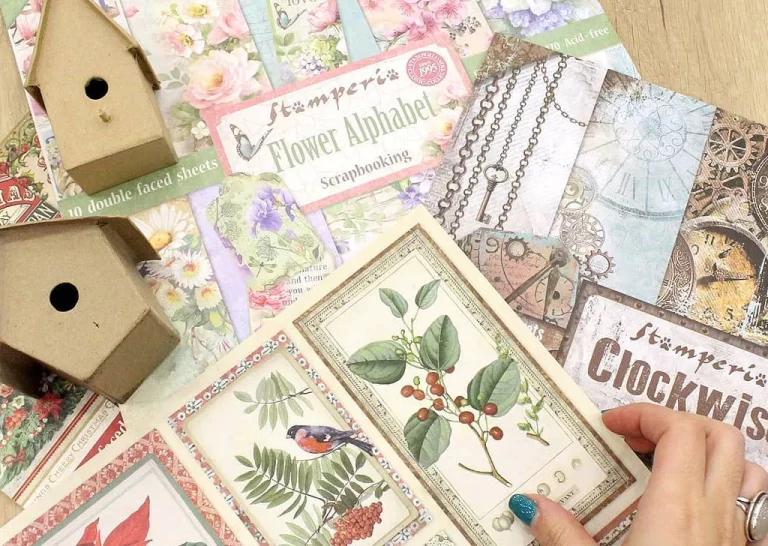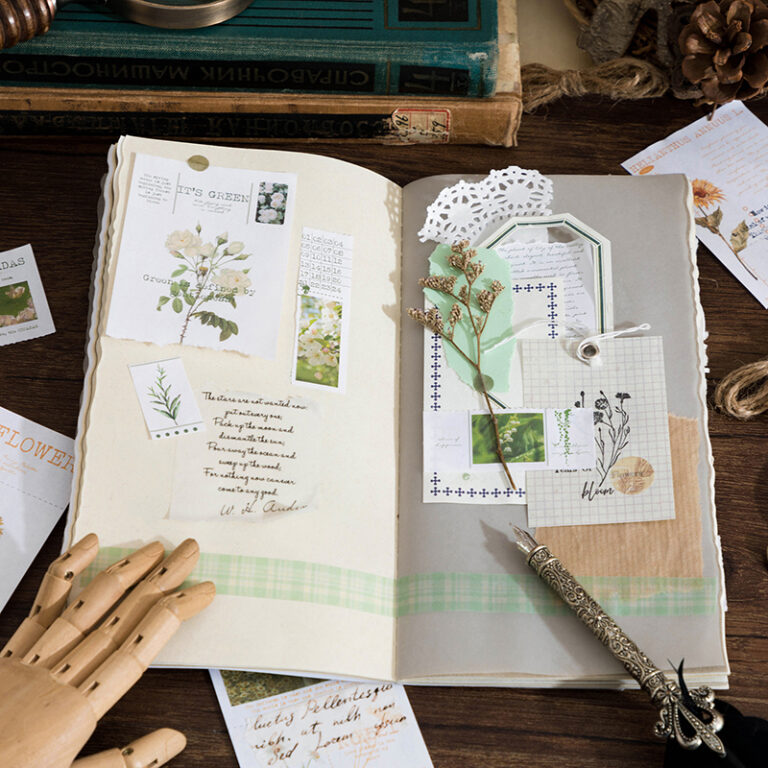Inspired by Culture: Scrapbooking with Ethnic and Folk Elements
Scrapbooking is a form of artistic expression that allows you to capture precious memories, special moments and tell stories in a unique and creative way. An exciting trend gaining momentum in the world of scrapbooking is the incorporation of ethnic and folk elements. These elements bring depth, cultural richness, and a sense of connection to ancestral roots to scrapbooking projects. In this article, we’ll explore how you can be inspired by culture when creating engaging and memorable scrapbooking layouts.
Table of Contents
The Charm of Cultural Scrapbooking
Scrapbooking is a creative and artistic way of preserving memories and telling stories through decorative albums. It is an activity that involves organizing and decorating photographs, magazine clippings, notes, letters and other personal items on themed pages, often complemented with handwritten or printed notes. The goal of scrapbooking is to capture special moments in life and create a visual and emotional representation of those memories.
“The Enchantment of Cultural Scrapbooking” appears to be a specific approach to scrapbooking that focuses on highlighting cultural and ethnic aspects. In this context, scrapbooking albums can be used to celebrate cultural traditions, historical events or trips to significant places. This involves selecting materials and design elements that reflect the culture in question, such as colors, patterns, images and ornaments that are related to the culture in focus.
Cultural scrapbooking can be a wonderful way to honor and preserve someone’s cultural heritage or to document unique cultural experiences. Furthermore, it can be an educational and enriching activity for children and adults, helping them learn about different cultures and appreciate the diversity of the world.
If you’re interested in exploring cultural scrapbooking, you can start by collecting relevant materials such as photographs, postcards, cultural event tickets, flyers, and other items that represent your culture or the culture you want to highlight. Then, you can create eye-catching album layouts that tell stories and convey the beauty and importance of that culture.
Remember that scrapbooking is a personal and highly creative activity, so there are no strict rules. The key is to enjoy the creation process and tell meaningful stories through the album pages.
How to Get Started: Tips for Incorporating Ethnic and Folk Elements
Incorporating ethnic and folk elements into your scrapbooking can be a wonderful way to celebrate cultural diversity and tell meaningful stories. Here are some tips to get started:
- Search and Learn :
- Start by researching the culture you want to incorporate into your scrapbooking. This includes learning about traditions, symbols, colors, patterns, and significant cultural events.
- Collect Authentic Materials :
- Look for authentic materials that represent the culture in question. This can include fabrics, wrapping paper, ribbons, stickers, postcards, stamps, coins, and even natural elements like leaves and flowers.
- Choose a Theme or Story :
- Decide what story or theme you want to tell with your scrapbook. It could be a trip to a specific country, a cultural celebration, a family tradition, or any event related to culture.
- Color and Pattern Selection :
- Choose colors and patterns that are representative of your chosen culture. For example, if you are working with Mexican culture, vibrant colors like red, green, and yellow may be appropriate.
- Incorporation of Symbols and Iconography :
- Use cultural symbols and iconography, such as ethnic, religious, or folk motifs, in your scrapbook pages. This can include mandalas, tile patterns, religious symbols, among others.
- Text and Annotations :
- Write notes or captions on the scrapbook pages that explain the relevance of the chosen cultural elements. This will help contextualize the stories for readers.
- Photos and Memories :
- Select photographs that capture authentic moments related to the culture you are highlighting. Be sure to include photos of relevant people, places, and events.
- Layers and Dimension :
- Layer your scrapbook pages using three-dimensional elements like dried flowers, buttons, shells, or other culturally related objects. This adds texture and depth to your pages.
- Consider the Composition :
- Think about the overall composition of your scrapbook pages. Arrange elements in a balanced and aesthetically pleasing way, considering visual flow.
- Be Respectful and Sensitive :
- When incorporating cultural elements, it is important to be respectful and sensitive to the traditions and meanings behind them. Avoid cultural appropriation and try to understand the depth of these elements.
- Share with the Community :
- If you are working with a specific culture, consider sharing your scrapbook with members of the cultural community. They can appreciate the effort to preserve and celebrate their heritage.
- Keep Learning and Exploring :
- Cultural scrapbooking is an ever-evolving journey. Continue learning about your chosen culture and explore new ways to incorporate cultural elements into your creations.
Remember that scrapbooking is a form of personal creative expression, and there are no strict rules. The most important thing is that your scrapbook tells a meaningful and authentic story that celebrates the culture you choose to embody.
Benefits of Incorporating Cultural Elements
Incorporating cultural elements into scrapbooking offers an added dimension to this creative hobby and can provide several benefits. Here are some specific benefits of incorporating cultural elements into scrapbooking:
- Cultural Preservation : Scrapbooking with cultural elements can help preserve cultural traditions and stories. This is especially important for communities that want to keep their cultural heritage alive.
- Connection to Roots : For those who have a significant cultural connection to a particular ethnic or national heritage, incorporating cultural elements into scrapbooking can help maintain and strengthen that connection, even when they are far from their origins.
- Personal and Family History : Cultural scrapbooking allows you to tell your own family’s story and how it is connected to a specific culture. This is valuable for passing this story on to future generations.
- Celebrating Cultural Events : You can use scrapbooking to celebrate important cultural events, such as festivals, religious ceremonies, or culture-specific holidays, by creating themed albums that highlight these special occasions.
- Unique Creative Expression : Incorporating cultural elements into scrapbooking allows you to develop a unique style that combines cultural traditions with your personal creativity. This makes your scrapbook creations truly unique.
- Cultural Learning : By researching and incorporating cultural elements into your scrapbooking, you learn more about the history, customs, and traditions of different cultures. This can lead to a deeper and more respectful understanding of the world’s cultures.
- Promoting Diversity : Cultural scrapbooking can help promote diversity and inclusion by sharing the beauty and richness of different cultures. It can be a way to educate others about the importance of cultural diversity.
- Skill Development : Scrapbooking with cultural elements can enhance your research, design and organization skills, making it an educational and enriching hobby.
- Meaningful Gifts : Scrapbooking albums with cultural elements can become meaningful gifts for friends and family who share the same cultural heritage. They will value the effort and meaning behind these creations.
- Cultural Pride : By creating scrapbooks that celebrate your own culture or the cultures of others, you contribute to cultural pride and recognition of the importance of diverse cultures in society.
In short, cultural scrapbooking is a wonderful way to combine personal creativity with appreciation and celebration of the world’s cultures. It allows you to tell meaningful stories and preserve valuable traditions through beautiful scrapbook creations.
In Practice, What Can Be Considered Ethnic and Folklore Elements?
In practice, the ethnic and folk elements that can be incorporated into scrapbooking are those that represent the specific culture you want to highlight. Here are some examples of ethnic and folk elements that can be considered:
- Fabrics and Textures : Use authentic fabrics such as Indian saris, African kente, Indonesian batik fabrics and more as backgrounds for your scrapbook pages. These fabrics can be used as a base or to create pockets and frames.
- Patterns and Motifs : Incorporating traditional patterns and motifs from the culture in question is an effective way to add ethnic elements. For example, use Moroccan tile patterns, Indian mandalas, Scottish tartan prints or Japanese woodcuts.
- Traditional Crafts : Add elements of traditional crafts to your creation, such as Chinese shredded paper cutouts, miniature African masks, Mexican embroidery or macramé work.
- Symbols and Iconography : Incorporating cultural symbols and ethnic icons is a powerful way to represent a culture. This may include the use of religious symbols such as the Star of David or the Indian om, or national symbols such as the flag.
- Meaningful Colors : Choose colors that are symbolic or traditional in the culture in question. For example, red and yellow are colors often associated with Chinese culture, while green and white can represent Irish culture.
- Stamps and Coins : Add authentic postage stamps, coins, or banknotes from the region where the culture is prevalent. This can give your pages an authentic feel.
- Photographs and Art : Include images or reproductions of art that are representative of the culture, such as famous paintings, photographs of historic sites, or portraits of important cultural figures.
- Calligraphy and Writing : If the culture in question has a distinctive handwriting style, try incorporating that writing into your pages, whether through computer fonts or even trying to write by hand.
- Traditional Recipes and Foods : If the culture is known for its cuisine, include traditional recipes or images of typical dishes in your scrapbook pages.
- Festivals and Celebrations : Highlight specific cultural festivals and celebrations, such as the Mexican Day of the Dead, the Indian Diwali Festival, or the Brazilian Carnival, with photo clippings and descriptions.
- Music and Dance : If the culture has distinctive music and dance, add related elements, such as sheet music, musical notes, or clippings of traditional dancers.
- Literature and Poetry : Cite excerpts from literature or poetry from the culture in question. This can add depth and meaning to your pages.
Remember that the key to incorporating ethnic and folk elements is to do so respectfully and authentically, avoiding cultural appropriation. Research the culture in question thoroughly, understand the meaning behind the elements you are using, and be aware of cultural sensitivity when sharing your creations.
Conclusion
Scrapbooking is much more than just collaging photographs; it is a form of expression that can convey emotions, tell stories and preserve memories in a creative way. By incorporating ethnic and folk elements, you add a new level of depth and authenticity to your designs. Careful research, choosing meaningful colors, using authentic patterns, and creating cultural narratives can transform your scrapbooking pages into meaningful works of art.
Remember that by taking this approach, you are celebrating cultural diversity and honoring your roots. Culturally inspired scrapbooking is a powerful way to connect the past with the present, while creating something beautiful for future generations. Feel free to explore and experiment as your creations are a unique expression of who you are and the stories you want to share with the world.

